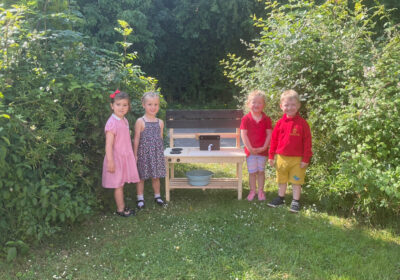By Sally Gregson.
As the days shorten and the midday sun rides lower on the horizon, our gardens are aflame with autumn colour. Night frosts have returned. And winter is baring its white teeth.
Despite ‘global warming’ and ‘climate change’ we in the UK are still going to experience freezing temperatures and icy winds in winter. If the autumn proves wet, boggy soil and damp roots are lethal to many plants we grow in the UK.
Agapanthus, especially the evergreen varieties, are particularly vulnerable. They come from South Africa where the rainfall is considerably less than in the UK and the temperatures higher. Those herbaceous varieties that lose their leaves in winter should survive and flower next summer if they are cut back and their crowns marked with a stick.
However, the evergreen varieties that look so good in a big pot are best brought into a cold greenhouse for the winter. Alternatively, the pots could be ranged against a south-facing wall in the sun, under the eaves, where they will receive little rainfall and enjoy the warmth of the house. Frost turns their leaves to mush and destroys the dormant flower-buds within the stems.
There are two different theories about Dahlias. This year, in particular, they have flowered endlessly in the hot sunny summer but a cruel frost will drop the leaves and remaining flowers overnight.
One school of thought is to leave the plants where they are growing and cover them with plenty of fibrous garden compost. This usually protects the crowns in winter but in spring, once the dahlias start to push up out of their protective covering, they are especially vulnerable. If they can be covered with more garden compost or with horticultural fleece overnight, they should come through successfully, but it needs vigilance.
However, if there is space in a cold greenhouse, it’s a more secure plan to lift the dahlia tubers and place them in big trays on top of newspaper on the floor. There they will survive well with the barest minimum of water until spring.
In March bring them out into the open greenhouse, add a little compost and start to water the crowns. They will flower about a month ahead of those that have been left outside to battle the storms.
One of the joys of the winter garden is a display of plants in pots and containers. They bring a splash of sunshine to the dull days and lift the heart of every gardener. And now is the time to pot up a glorious mix of winter heathers, sedges, and perhaps a special hellebore.
Any container from a cracked mug to an old teapot, could be used to pot up mint, chives, or parsley to put on the kitchen windowsill for supplies of fresh green herbs all winter. Lift clumps of chives and parsley with a fork and transfer them into the containers with a little commercial potting compost to add a few nutrients. Mint already growing in pots to prevent a menthol land-grab, could be split and each half potted up individually: one for the windowsill herb garden; the other to put back in an outside pot. Refreshing the soil helps the plant to grow away from the rusts that plague all mints.
Tulips are best potted in November, rather than earlier. They benefit from being planted after the first frosts of the winter that slow down the many viruses that affect them. Botrytis and Tulip Fire are two particular scourges that are best avoided by late planting.
And for pots, some of the species tulips that grow simply in the wild in parts of Eastern Europe, are especially good mixed with smaller daffodils and Muscari (Grape Hyacinths). Tulip ‘Persian Pearl’ with its early, rich pink flowers would go well in a large pot with lemon-cream Narcissus ‘Thalia’ and two-tone Muscari ‘Mountain Lady’.
In a sunny spot in the garden try interplanting the neatly pin-striped sedge, Carex morrowii ‘Variegata’ with some bright red dwarf tulips such as T batalinii ‘Red Hunter’. Or, you could use T. sprengeri if you can get hold of them. After a few years this beautiful and sought-after tulip might well naturalise among its companions. The surprise and joy of seeing flocks of red heads standing among the bowing grasses would be worth the wait.











Leave a Reply